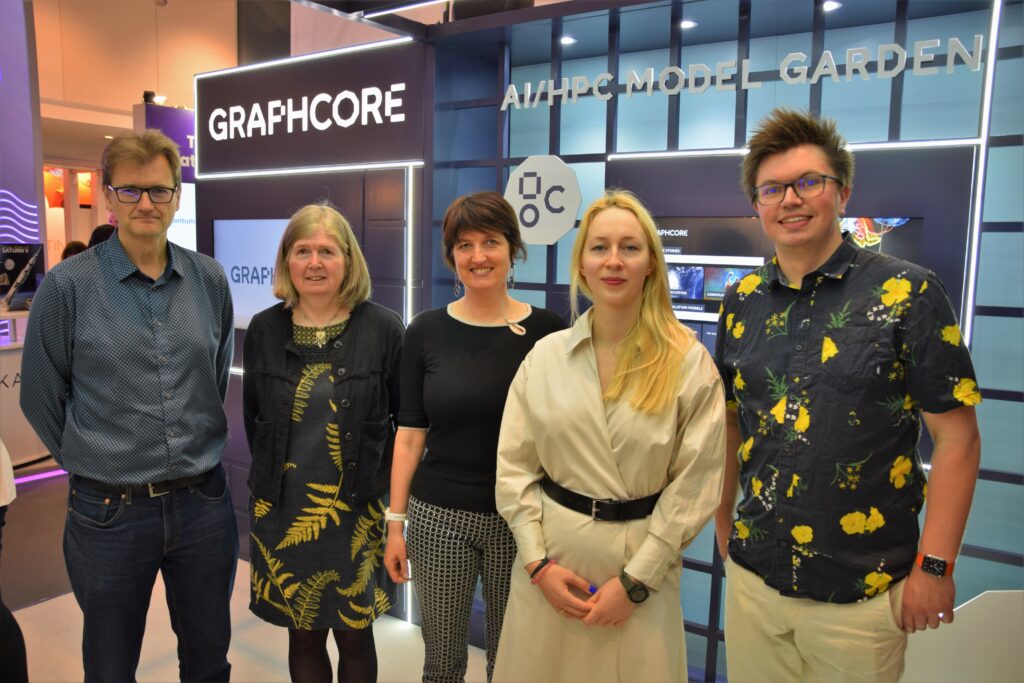A new collaboration for industry engagement with exascale computing
Introducing the new collaboration between the Science and Technology Facilities Council (STFC) and Graphcore.
The adoption of Graphcore’s Intelligence Processing Unit (IPU) technology in the Hartree Centre’s supercomputing cluster marks the start of a strategic partnership between Graphcore and STFC. The new partnership covers a broader remit related to industrial engagement and development of the UK’s exascale computing competitiveness.

Reinforcing the UK’s vision for fusion energy leadership
The Hartree Centre’s mission is to transform UK industry through high-performance computing (HPC), data analytics, and AI. Last year becoming the site of a new centre of excellence in extreme scale computing for fusion energy under a collaboration between STFC and UKAEA.
As an international leader in fusion energy science and technology, UKAEA believes fusion will be a safe, low carbon and sustainable part of the world’s future energy supply.
Under STFC’s collaboration with UKAEA, the Hartree Centre is applying the latest computing systems and top-tier supercomputing and data science expertise to run complex models and simulations that will help scientists and engineers progress understanding of fusion and develop viable powerplant technologies. Research projects include developing “digital twins” of future fusion powerplants, and understanding and modelling plasma, the complex, fourth state of matter that drives the fusion process.
Given the prohibitive technical and cost barriers to real-world prototyping, projects like these must be conducted virtually “in-silico,” requiring access to some of the world’s most advanced and capable computing resources.
“The goal of delivering clean fusion energy is one of the great scientific endeavours of our time. Breakthrough technologies in every field are being deployed in pursuit of this goal – including the use of artificial intelligence for simulation,”
“We look forward to working with Graphcore in such an exciting field where accelerating progress could mean that this transformative new way of generating energy is available to everyone, sooner rather than later.”
said Prof. Kate Royse, Director of the Hartree Centre
A partnership at the confluence of AI and HPC
The STFC-UKAEA fusion energy research projects exemplify the ever-growing trend of convergence between AI and HPC. While HPC is an essential tool fuelling the advance of computational science, AI is increasingly being used alongside more traditional HPC techniques to run large-scale simulations in an accelerated timeframe. Graphcore systems are already being used on data from the Large Hadron Collider.
This convergence between HPC and AI is generating new types of heterogeneous workloads that cannot be satisfied by single monolithic systems; such workloads require new hybrid systems and approaches that combine benefits from both worlds to accelerate and achieve sustained exascale performance.
Graphcore’s IPU systems are particularly well-suited to such hybrid AI-HPC workloads and can deliver class-leading performance over a range of applications while seamlessly fitting into existing datacentres.
“Modelling the hugely complex, strongly coupled, multi-physics system that is a fusion powerplant is undeniably a simulation grand challenge – an endeavour that has long been heralded an ‘exascale’ challenge,”
“Only now, as the world’s first exascale machines become available, and through the convergence of AI methods and traditional HPC algorithms is digitally twinning of fusion powerplant technology becoming a realistic prospect. Graphcore’s IPU systems are a tantalising glimpse of what a second generation of exascale machines might look like. We are incredibly excited to be working with both STFC Hartree Centre and Graphcore to engineer a transformation around our predictive capability for fusion powerplant design.”
said Rob Akers, Head of Advanced Computing at UKAEA
Graphcore and STFC: building a foundation for broader collaboration
For the first group of Hartree Centre researchers working with Graphcore, access to IPU technology will be provided via the IPU Cloud service offered by G-Core Labs, a European Cloud and EDGE provider. Atos, a global leader in AI and HPC technology, will work closely with G-Core Labs, Graphcore, and the Hartree Centre’s researcher team as a systems integrator.
As part of the strategic partnership between Graphcore and STFC, Graphcore will provide extensive technology training (including workshops), while STFC will share guidance and feedback related to the performance of IPU systems in speeding up workloads and accelerating research at the Hartree Centre.
STFC, Graphcore, and Atos will also explore further partnerships to support the UK’s exascale computing strategy, which aims to provide appropriate and ambitious compute capabilities for diverse research and innovation communities.
“Atos is delighted to be working with Graphcore and G-Core Labs to help provide STFC with advanced AI compute to support their vital work on nuclear fusion energy, and beyond. This sort of essential, world-changing research exemplifies the best of what converged AI and HPC can enable,”
said Andy Grant, VP, Global Head of HPC, AI and Quantum Sales, Atos.
Additionally, the partnership calls for STFC, Graphcore and Atos to jointly explore industrial partnerships and engagements—including though the newly-established Hartree National Centre for Digital Innovation (HNCDI), which provides a safe and supportive environment for businesses to acquire the skills, knowledge and technical capability required to adopt digital technologies like supercomputing, data analytics, AI, and quantum computing.
Join Newsletter
Provide your details to receive regular updates from the STFC Hartree Centre.
